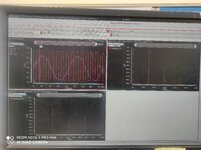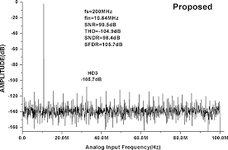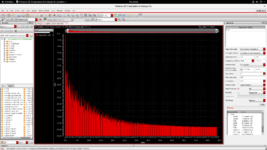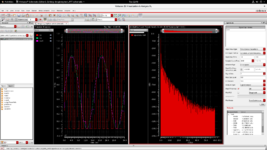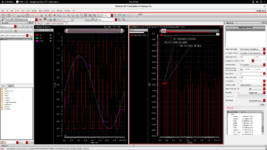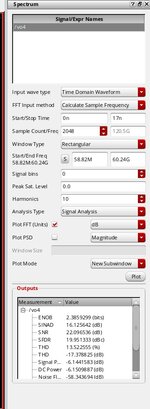parminder
Member level 2
i am trying to plot FFT spectra of bootstrap switch Sample and hold circuit, i have got the fundamental frequency and harmonics distortion components in the graph. i want my graph like 2nd image but i am not getting noise. can anyone please help me out where am i making mistake?
Fin= 50Mhz
Fs= 500Mhz
Fin= 50Mhz
Fs= 500Mhz
